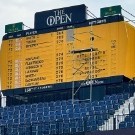-
Posts
3,150 -
Joined
-
Last visited
-
Days Won
2
DaveP043 last won the day on May 22 2020
DaveP043 had the most liked content!
About DaveP043
- Birthday 01/03/1956
Profile Information
-
Gender
Male
-
Location
Northern Virginia
-
Interests
You mean I need interests outside of golf?
Player Profile
-
Age
60 and over
-
Swing Speed
91-100 mph
-
Handicap
6.7
-
Frequency of Play/Practice
Multiple times per week
-
Player Type
Competitive
-
Biggest Strength
Putting
-
Biggest Weakness
Approach
-
Fitted for Clubs
Yes
Recent Profile Visitors
11,325 profile views
DaveP043's Achievements

(5/14)
7.1k
Reputation
-
Shout to @Peaksy68, is there a way to go back to a previously saved version of the google sheet? Someone has changed it, and lost the previous entries.
-

Why is it so freaking hard to just "swing easy?!?!?!?!?!"
DaveP043 replied to MN_Hacker's topic in General Q&A
This! Proper sequence is the key, in my opinion. If you do things in the right order, you'll get the most out of your swing. -
In these situations, you take things one step at a time. As @cnosil says, you take penalty relief from the red Penalty Area (Rule 17.1). Then you have a brand new situation, and if relief is warranted from something else, like the cart path, then you may choose to take that relief. If you're lucky enough that free relief from the path can put you in the fairway, good for you. But remember, the Nearest Point of Complete Relief isn't always in a good spot, it could be back towards the Penalty Area. The NPCR also requires that your stance and areas of swing is clear of the path. You might even have to stand in the Penalty Area to play your shot after taking cart path relief.
-
I'm sure you're correct, but his primary focus overall is speed. Monte's focus is on swing mechanics. Dave Pelz focused on short game, and did his best to convince everyone that short game was most important. We all see things through our own blinders. Back to the two articles quoted, I found the second one pretty good. Notice that the very first thing mentioned was coming to grips with the longest clubs. Number 1, improve ballstriking! In the first article, most of it was good, if a bit generic. However, this bit I have a problem with: That's just not accurate. Look at this from ShotScope/MGS, https://mygolfspy.com/news-opinion/shot-scope-case-study/. The difference between a 5 handicap and a 10 is ONE putt per round, and that's about the largest difference for any 5-stroke handicap difference. Maybe the route to significantly lower scores should be something besides putting. Consider, if you spend as much time as possible on putting, does that leave any time for full swing work? I think this is poor advice, the bulk of a player's practice should be on full swing work, tee to near-the-green work. And of course this is a generality, the best thing to do is to evaluate your weakest skills and concentrate on them first, but in general its full-swing improvements that will produce the largest score changes.
-
This isn't surprising to me at all, the guy who makes his money by teaching golf swing says that golf swing is more important than speed training, the guy who makes his money from speed training says the opposite. I think each one is correct at times, depending on the individual player. My personal experience, as a semi-competent and experienced swinger, my swing DID seem to become more efficient through Stack sessions, and I find I'm hitting it straighter on the course.
-
From everything I've read, the "difference" between two different levels of golfers is generally about 2/3 full-swing game, and about 1/3 short game and putting. Everything is important, and different players will have different needs, but the biggest contributor to overall improvement for most people is improved full swing performance. Strokes gained stuff can illustrate this a little Go find a SG putting app,, easily done online, and run a few rounds through it. All you'll need is the length of your first putt, and the number of putts on that hole. Use the "tour pro" standards, so you're comparing yourself to someone who's nominally a +5 or +6 handicap. I bet most 15-hndicappers (20 strokes or so behind the "tour pro" level) will end up losing 5 or 6 strokes putting. That means he's losing 15 MORE strokes in the other stuff, driving, irons, short game. But its late for me, I'll read the articles and comment on those tomorrow.
-
Looks like these cover the rules that impact normal play the most. At something just over an hour, it seems like a manageable duration, and if its being presented by USGA staff its going to be accurate. Everyone can use a rules refresher at times.
-

Anyone else observing the eclipse from the course?
DaveP043 replied to barney_bogey's topic in The 19th Hole
In northern Virginia we're expecting about 80% eclipse, between about 2 and 4:30. I'll be serving as a volunteer rules official at a local PGA chapter tournament. -

Stack Training System - 2023 Forum Member Review
DaveP043 replied to GolfSpy BOS's topic in Forum Testing Reviews
I bought a used iPad just for my review. That was no big deal, since I got the rest of the stuff for the review for "free", but it might make me think twice if I had to add that cost to that of the Stack and launch monitor. -

2024 Masters Pool Sponsored by Titleist and Vokey Wedges
DaveP043 replied to Golfspy_CG2's topic in Deals & Contests
I'm in cut will be at +1 low am Stewart Hagestad -

Do you work in the golf world? Or Wish You Did?
DaveP043 replied to Rob Person's topic in The 19th Hole
I've just retired. Over the last few years I've become very familiar with the Rules of Golf (through the USGA 3-day workshop, 3 years in a row), and will work as a volunteer rules official for 25 to 30 days this year. I'm working through the state golf association and through the local section of the PGA or America for most of those. Its been fun, it keeps me interested, and its a bit of "giving back" to the game. Rules aren't for everyone, but it might be something to look into. -
For me, I need improved ball-striking. I fit the image of a "typical" player, Strokes Gained research suggests that the difference between one handicap level and another is largely ball-striking, with short game and putting having a smaller impact. I'm working on regaining distance using the Stack system, distance I've lost over the past 4 or 5 years (I'm now 68). I need to also make time for range sessions, just working on repeating the same swing every time, improving consistent contact. Those improvements will help me hit more greens in regulation, and get closer when I hit them. GIR has the best correlation to score of any of the traditional statistics. None of this is intended to say that I can't improve my chipping and putting. I certainly can do that, and will use some of my practice time to that end. But the biggest pay-off will come from improved driving and iron play.
-
I now have 3 pairs of Footjoy Traditions, I love them. I have always felt that Footjoy shoes fit my feet well, where other brands just don't. The Traditions have spikes, which I prefer, I hate to wear out the soles when the uppers are still in good shape. They're guaranteed waterproof for a year, and mine are still good after nearly two years. The sole is pretty lightweight, certainly compared to more traditional construction. And they do come in size 15. In my experience, shoes are pretty much individualistic. They're built on a mold, called a "last", and if the mold isn't shaped like your feet, the shoes won't feel good on your feet, even if they're the right size. Like I said, Footjoy has fit my feet pretty well over a lot of years, but they might not fit yours. Good luck finding the right shoe!
-
Outside of actually playing golf, I spend a good bit of time volunteering as a Rules Official. Right now, I have 27 or 28 days reserved this year. Does that count as "outside of golf"? Beyond that, I enjoy cooking, and I think I'm pretty decent at it.
-

Profile picture
DaveP043 replied to Short grass's topic in Introduce Yourself/ WIYB (What's In Your Bag)
IF you're looking for something to install on your home computer, GIMP is a pretty comprehensive photo editing program, free of charge. https://www.gimp.org/ I've been using it for quite a while when posting photos here. Its not super-intuitive, but even an old fossil like me CAN learn to do simple tasks like cropping and re-sizing photos.











